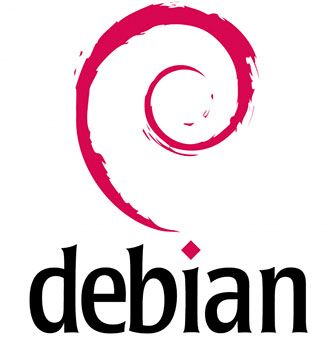How To Install SNMP on Debian 12

In this tutorial, we will show you how to install SNMP on Debian 12. SNMP is an application-layer protocol that facilitates the exchange of management information between network devices. It enables administrators to collect and analyze data from various network components, such as routers, switches, servers, and printers. SNMP provides a standardized way to monitor and control network devices, making it an essential tool for network management.
SNMP operates on a client-server model, where the SNMP manager (client) sends requests to the SNMP agent (server) running on network devices. The agent collects data from the device’s Management Information Base (MIB) and sends responses back to the manager. This communication occurs over UDP, typically using port 161 for requests and port 162 for traps.
This article assumes you have at least basic knowledge of Linux, know how to use the shell, and most importantly, you host your site on your own VPS. The installation is quite simple and assumes you are running in the root account, if not you may need to add ‘sudo‘ to the commands to get root privileges. I will show you the step-by-step installation of the (Simple Network Management Protocol) SNMP on Debian 12 (Bookworm).
Prerequisites
Before proceeding with the installation, make sure your Debian 12 system meets the following requirements:
- A server running one of the following operating systems: Debian 12 (Bookworm).
- It’s recommended that you use a fresh OS install to prevent any potential issues.
- SSH access to the server (or just open Terminal if you’re on a desktop).
- Familiarity with basic terminal commands will help you follow the installation steps.
- An active internet connection. You’ll need an internet connection to download the necessary packages and dependencies.
- A user account with sudo privileges to execute administrative commands.
Install SNMP on Debian 12
Step 1. Update Your System Package.
To begin, it’s crucial to ensure that your Debian 12 system is up-to-date. Open the terminal and run the following commands:
sudo apt update sudo apt upgrade
These commands will refresh the package list and upgrade any outdated packages to their latest versions, providing a stable foundation for installing SNMP.
Step 2. Installing SNMP.
To begin, update your package lists and install the SNMP daemon:
sudo apt install snmpd
After the installation completes, verify that the SNMP daemon is installed correctly by checking its version:
snmpd --version
Step 3. Basic SNMP Configuration,
The main configuration file for the SNMP daemon is located at /etc/snmp/snmpd.conf. Before making any changes, create a backup of the original file:
sudo cp /etc/snmp/snmpd.conf /etc/snmp/snmpd.conf.backup
Open the configuration file using your preferred text editor:
sudo nano /etc/snmp/snmpd.conf
To set up a basic SNMP configuration, locate the agentAddress directive and specify the IP address and port on which the SNMP agent should listen. For example:
agentAddress udp:161,udp6:[::1]:161
Next, find the rocommunity directive and set a community string for read-only access. Replace public with your desired community name:
rocommunity public default -V systemonly
By default, the SNMP agent listens on all interfaces. To restrict access to specific IP addresses, modify the agentAddress directive:
agentAddress udp:161,udp6:[::1]:161,udp:127.0.0.1:161
This configuration allows access only from the local host and the specified IP address.
Step 4. Configuring SNMP v3.
SNMP v3 offers enhanced security features. To configure SNMP v3, add the following lines to the configuration file:
createUser authOnlyUser MD5 "authPassword" createUser authPrivUser SHA "authPassword" AES "privPassword" rouser authOnlyUser rwuser authPrivUser priv
This creates two users: authOnlyUser with authentication and authPrivUser with both authentication and privacy.
- Setting Up SNMP Traps.
SNMP traps allow the agent to send notifications to the manager. To configure traps, uncomment and modify the following lines:
trap2sink 192.168.1.100 public informsink 192.168.1.100 public
Replace 192.168.1.100 with the IP address of your SNMP manager.
- Customizing System Information
You can customize the system information provided by the SNMP agent. Look for the following directives and modify them according to your environment:
sysLocation Datacenter, Rack 42 sysContact admin@idroot.us sysName Debian-Server-01
Step 5. Firewall Configuration.
To allow SNMP traffic through the firewall, open the necessary ports using ufw:
sudo ufw allow 161/udp sudo ufw allow 162/udp
Ensure that the firewall rules are persistent across reboots by enabling ufw:
sudo ufw enable
Step 6. Starting and Managing SNMP Service.
Start the SNMP daemon using the following command:
sudo systemctl start snmpd
To enable SNMP at boot, run:
sudo systemctl enable snmpd
You can check the status of the SNMP service with:
sudo systemctl status snmpd
If you make any changes to the configuration file, restart the SNMP service:
sudo systemctl restart snmpd
Step 7. Testing SNMP Configuration.
To test your SNMP configuration, install the SNMP client tools:
sudo apt install snmp
Use the snmpwalk command to retrieve information from the SNMP agent:
snmpwalk -v 2c -c public localhost
This command performs an SNMP walk using SNMP v2c, the community string public, and targets the local host. If the configuration is correct, you should see a list of SNMP OIDs and their corresponding values.
If you encounter issues, double-check your configuration file for any syntax errors and ensure that the SNMP daemon is running.
Congratulations! You have successfully installed SNMP. Thanks for using this tutorial to install the latest version of the SNMP (Simple Network Management Protocol) on Debian 12 Bookworm. For additional help or useful information, we recommend you check the official Debian website.